
Airdrie Savings Bank was a small commercial bank operation in the Lanarkshire area of Scotland. It ran three branches throughout the area, with its head office in Airdrie at the time of the announcement of its closure. Total assets of the bank at 31 October 2013 were £158 million with a reported loss of £267,000. In January 2017, the bank announced it would begin closure proceedings on 28 April of that year.
The Home Bank of Canada was a Canadian bank that was incorporated July 10, 1903, in Toronto but did not receive a Treasury Board certificate to operate as a chartered bank until the next year.

An unlimited company or private unlimited company is a hybrid company (corporation) incorporated with or without a share capital but where the legal liability of the members or shareholders is not limited: that is, its members or shareholders have a joint and several non-limited obligation to meet any insufficiency in the assets of the company to enable settlement of any outstanding financial liability in the event of the company's formal liquidation.
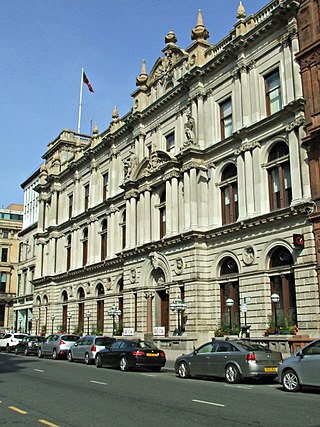
Clydesdale Bank plc is a retail and commercial bank in Scotland. It was formed in Glasgow, Scotland in 1838 and now trades as Virgin Money.

Trongate is one of the oldest streets in the city of Glasgow, Scotland. Trongate begins at Glasgow Cross, where the steeple of the old Glasgow Tolbooth is situated, being the original centre of medieval Glasgow, and goes westward changing its name to Argyle Street at Glassford Street. In modern times, it forms the notional southern boundary of the Merchant City area.

The Bank of United States, founded by Joseph S. Marcus in 1913 at 77 Delancey Street in New York City, was a New York City bank that failed in 1931. The bank run on its Bronx branch is said to have started the collapse of banking during the Great Depression.
NetBank, formerly named Atlanta Internet Bank (1996) and Net.B@nk (1998), was a direct bank.
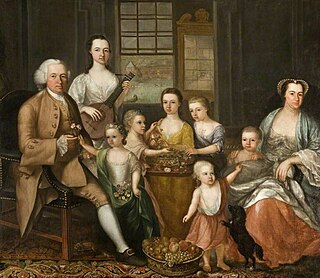
The Tobacco Lords were a group of Scottish merchants active during the Georgian era who made substantial sums of money via their participation in the triangular trade, primarily through dealing in slave-produced tobacco that was grown in the Thirteen Colonies. Concentrated in the port city of Glasgow, these merchants utilised their fortunes, which were also partly made via the direct ownership of slaves, to construct numerous townhouses, churches and other buildings in Scotland.
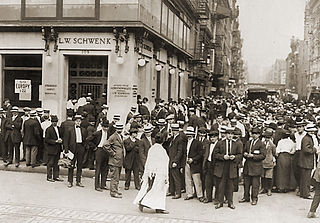
A bank failure occurs when a bank is unable to meet its obligations to its depositors or other creditors because it has become insolvent or too illiquid to meet its liabilities. A bank usually fails economically when the market value of its assets declines to a value that is less than the market value of its liabilities. The insolvent bank either borrows from other solvent banks or sells its assets at a lower price than its market value to generate liquid money to pay its depositors on demand. The inability of the solvent banks to lend liquid money to the insolvent bank creates a bank panic among the depositors as more depositors try to take out cash deposits from the bank. As such, the bank is unable to fulfill the demands of all of its depositors on time. A bank may be taken over by the regulating government agency if its shareholders' equity are below the regulatory minimum.
The government interventions during the subprime mortgage crisis were a response to the 2007–2009 subprime mortgage crisis and resulted in a variety of government bailouts that were implemented to stabilize the financial system during late 2007 and early 2008.

The British credit crisis of 1772–1773 also known as the crisis of 1772, or the panic of 1772, was a peacetime financial crisis which originated in London and then spread to Scotland and the Dutch Republic. It has been described as the first modern banking crisis faced by the Bank of England. New colonies, as Adam Smith observed, had an insatiable demand for capital. Accompanying the more tangible evidence of wealth creation was a rapid expansion of credit and banking, leading to a rash of speculation and dubious financial innovation. In today’s language, they bought shares on margin.
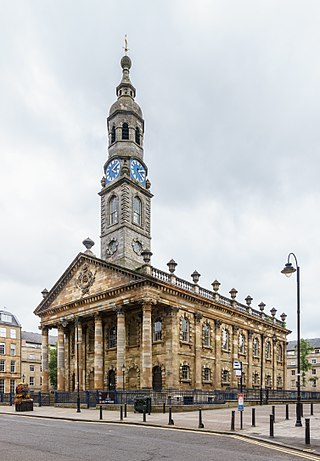
St Andrew's Square is a public square in the city of Glasgow, Scotland and lies to the south east corner of Glasgow Cross, close to Glasgow Green. The square is noted for its immense 18th-century classical church, St Andrew's in the Square, from which the square takes its name. The church was completed in 1758, to the designs of architect Allan Dreghorn and master mason Mungo Naismith and is among the finest of its type anywhere in Britain. The interior has lavish 18th century rococo plasterwork. The building is Category A listed. It is one of six squares in the city centre.

The Amsterdam banking crisis of 1763 in the Netherlands followed the end of the Seven Years' War. At this time prices of grain and other commodities were falling sharply, and the supply of credit dried up due to the decreased value of collateral goods. Many of the banks based in Amsterdam were over-leveraged and were interlinked by complex financial instruments, making them vulnerable to a sudden tightening of credit availability. The crisis was marked by the failure of one large bank - that of De Neufville - and many smaller financial enterprises. The extent of the crisis was mitigated by the provision of additional liquidity by the Bank of Amsterdam, the Dutch central bank. Similarities have been identified between these events and the financial crisis of 2007–2008.
James Simpson Fleming FRSE (1828-1899) was a Scottish lawyer and banker. From 1858 to 1871 he was a partner in the legal firm of McGrigor, Stevenson & Fleming. In the 1870s he was responsible for introducing the Royal Bank of Scotland to London.

Signature Bank was an American full-service commercial bank headquartered in New York City and with 40 private client offices in the states of New York, Connecticut, California, Nevada, and North Carolina. In addition to banking products, specialty national businesses provided services specific to industries such as commercial real estate, private equity, mortgage servicing, and venture banking; subsidiaries of the bank provided equipment financing and investment services. At the end of 2022, the bank had total assets of US$110.4 billion and deposits of $82.6 billion; as of 2021, it had loans of $65.25 billion.
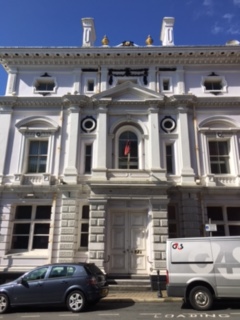
Dumbell's Bank was a bank in the Isle of Man. The bank's insolvency in 1900, known as Black Saturday and referred to in the Isle of Man as the Dumbell's Bank Crash, resulted in a run on the bank with many individuals losing their life savings and the ruin of numerous local businesses causing poverty, depression and bankruptcy. The effects were profound and lasted for a considerable number of years.
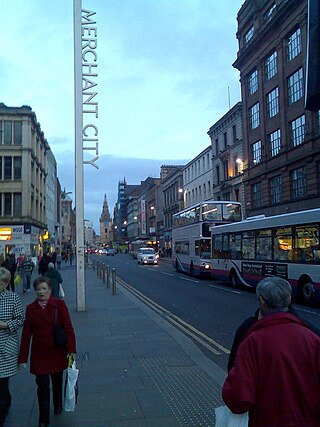
Glassford Street is a major thoroughfare in the city of Glasgow, the largest city in Scotland. The street runs north from the junction of Argyle Street and Trongate through the Merchant City until it meets Ingram Street.
The Glasgow Savings Bank, formed in 1836, had become the largest savings banks in Scotland by the mid-1850s and the largest in the country by 1870. When the trustee savings banks were reorganised into regional banks in 1975 Glasgow became the core of the West of Scotland TSB.
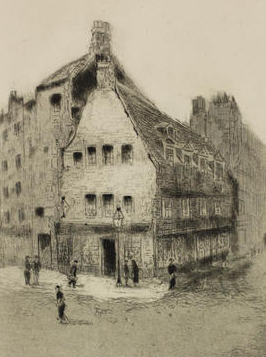
The Ship Bank or more usually Old Ship Bank was an independent bank formed in Glasgow in 1750: Glasgow's first bank.
The Northumberland and Durham District Bank was a joint stock bank created in Newcastle upon Tyne, England, in 1836, which operated across the north-east of England. It was the area's largest such bank in its period, but failed in 1857 and was liquidated at enormous cost to its shareholders between then and 1865. A modern analysis of the bank's failure suggests the cause of its collapse was its own thorough incompetence, rather than an exogenous shock such as a monetary panic or bank run.














